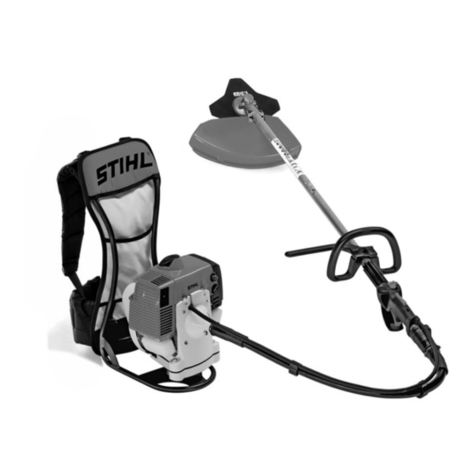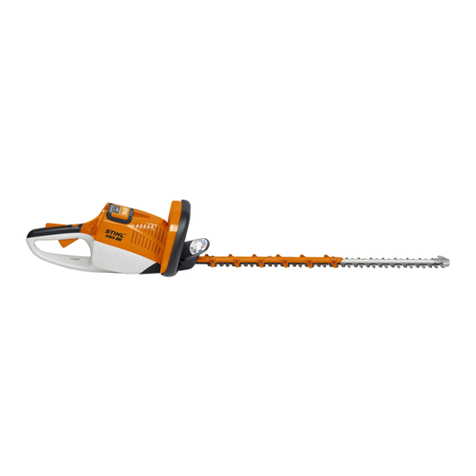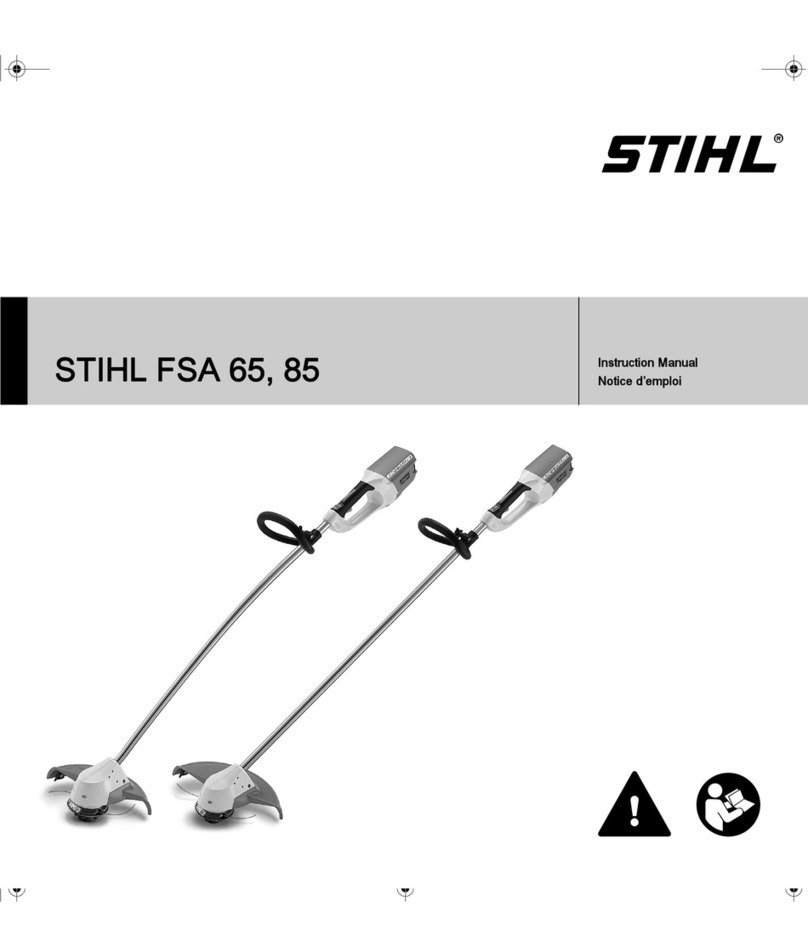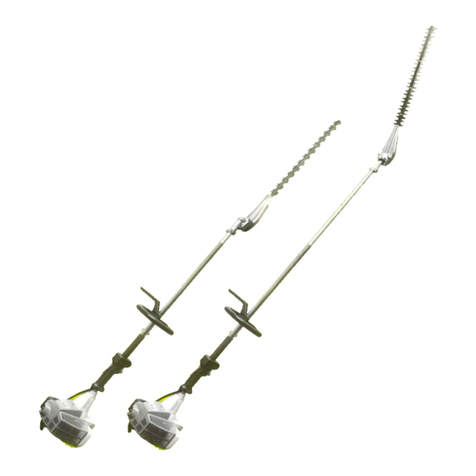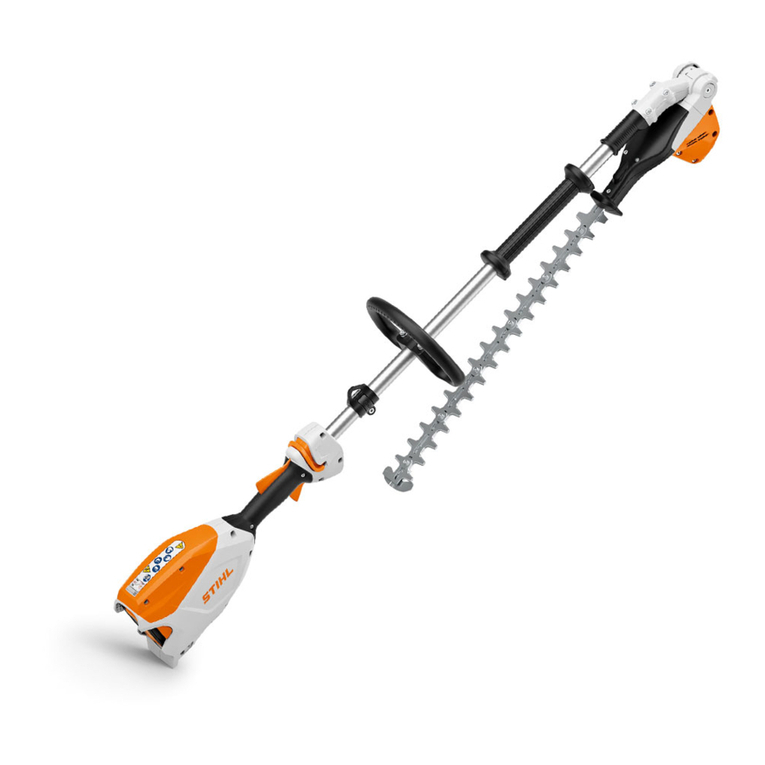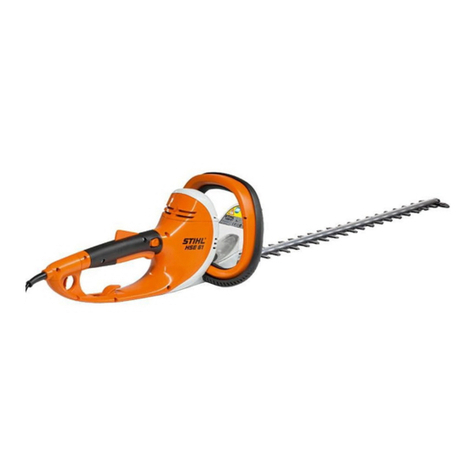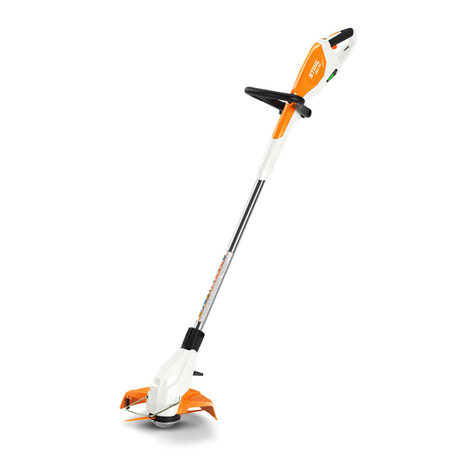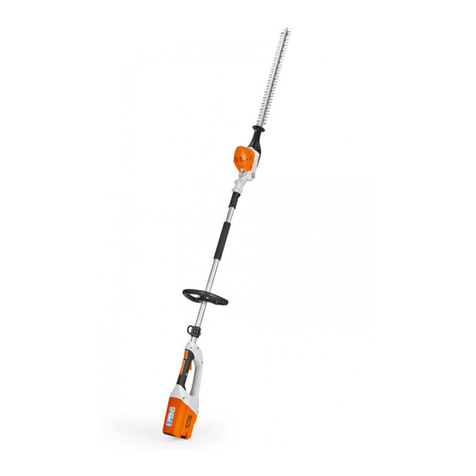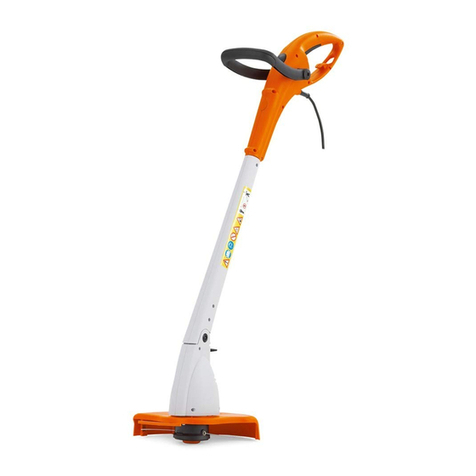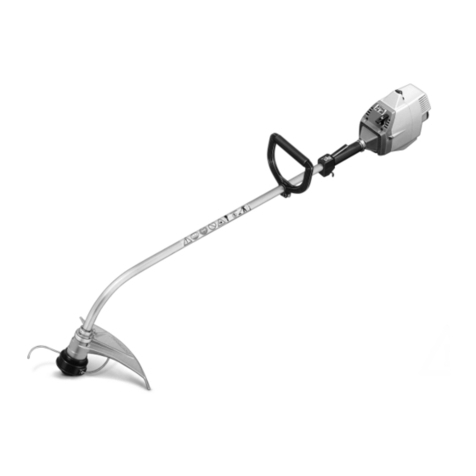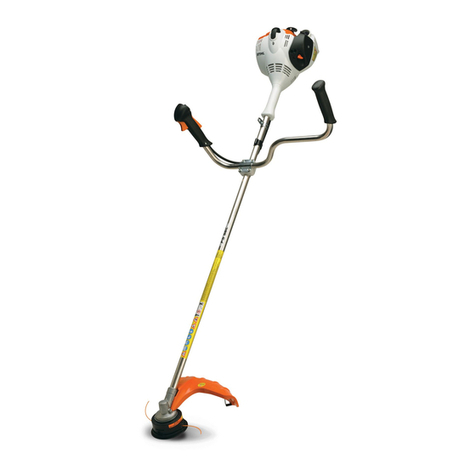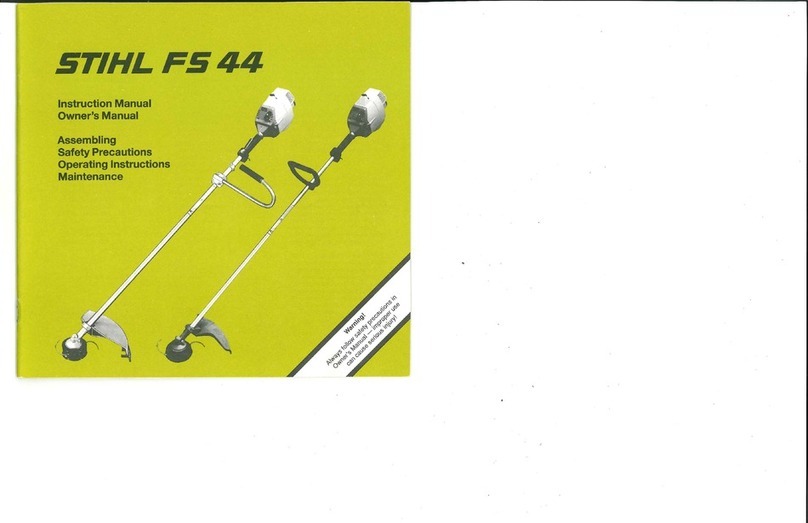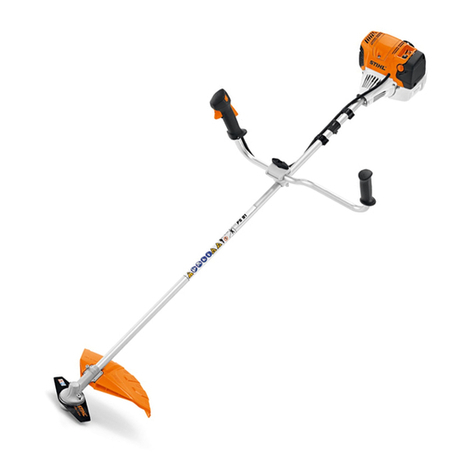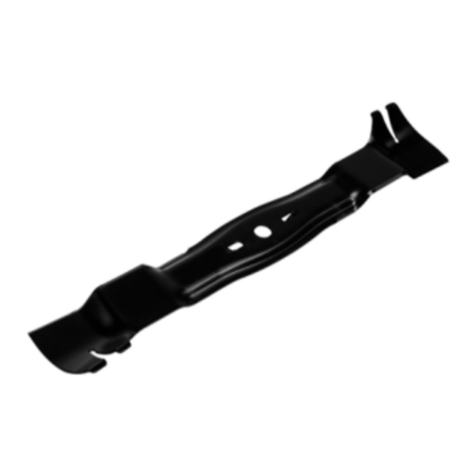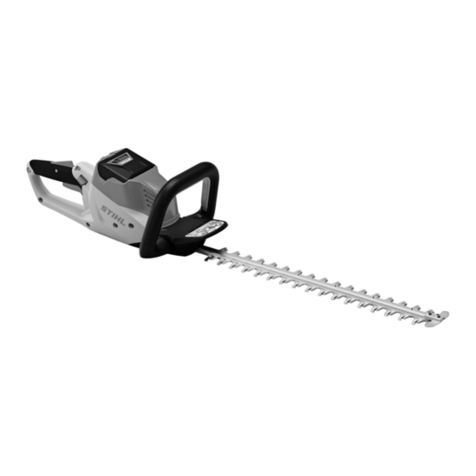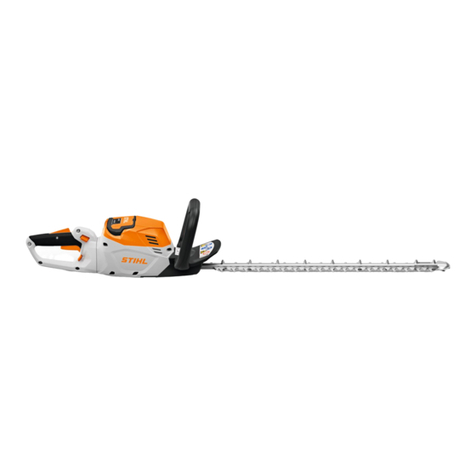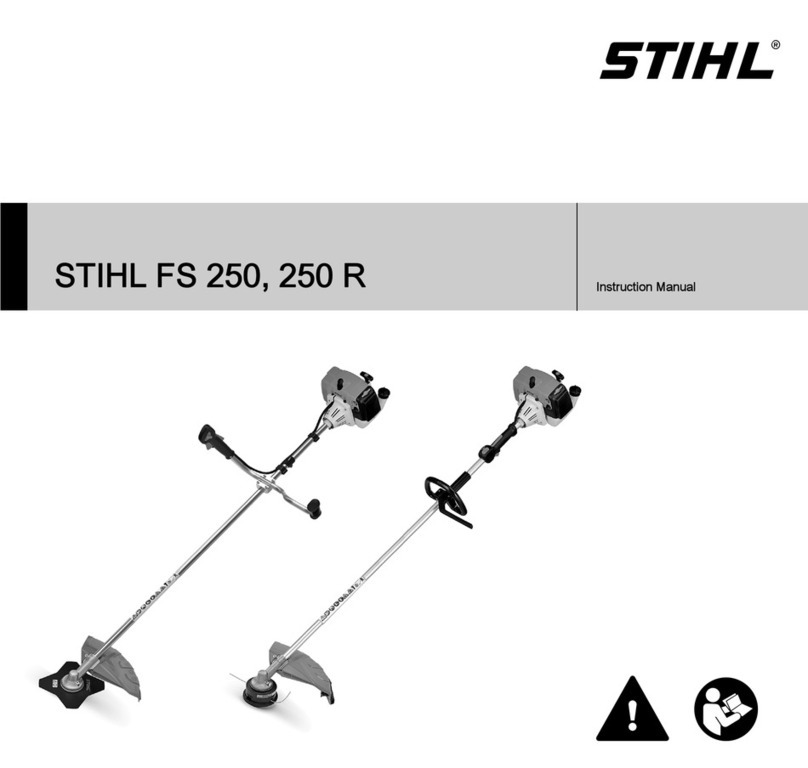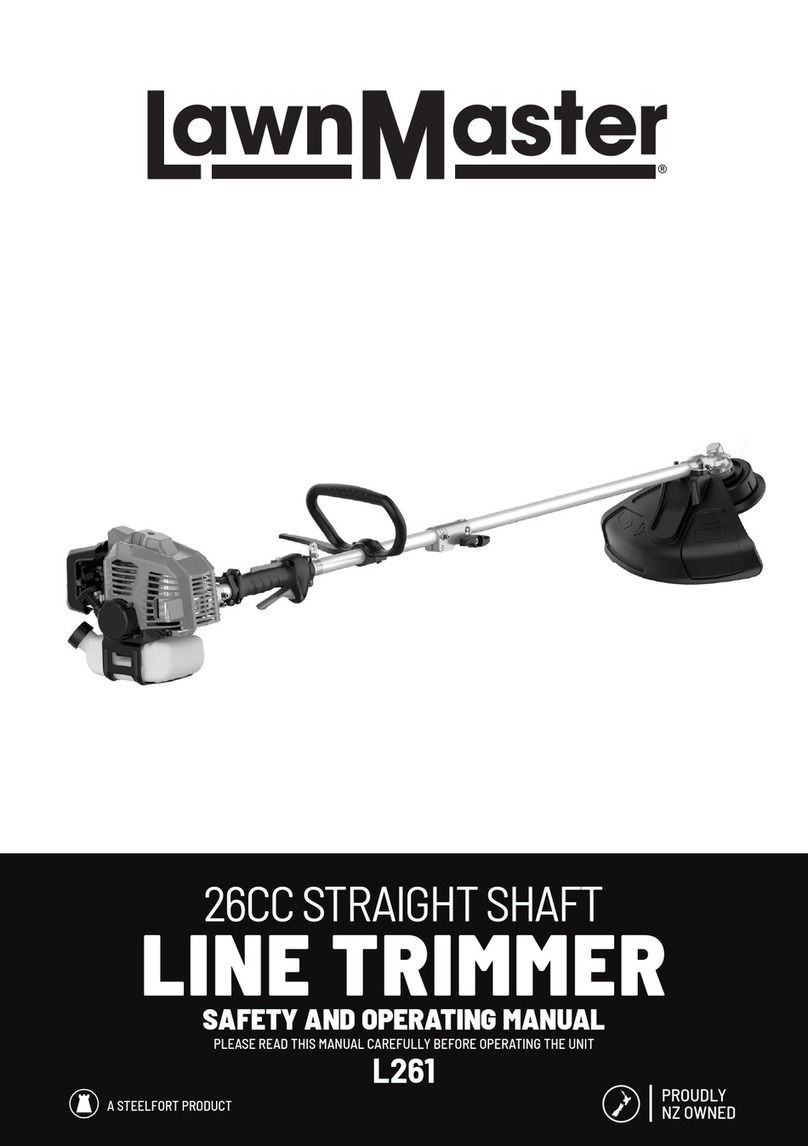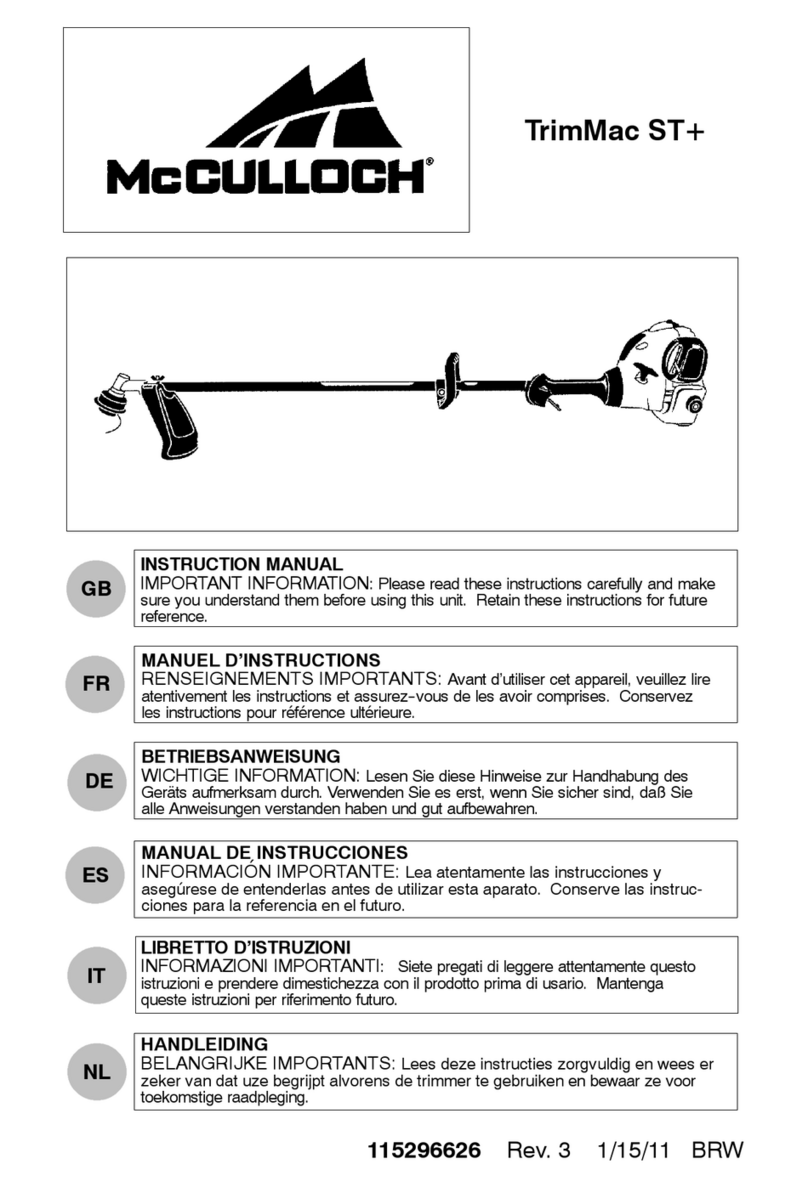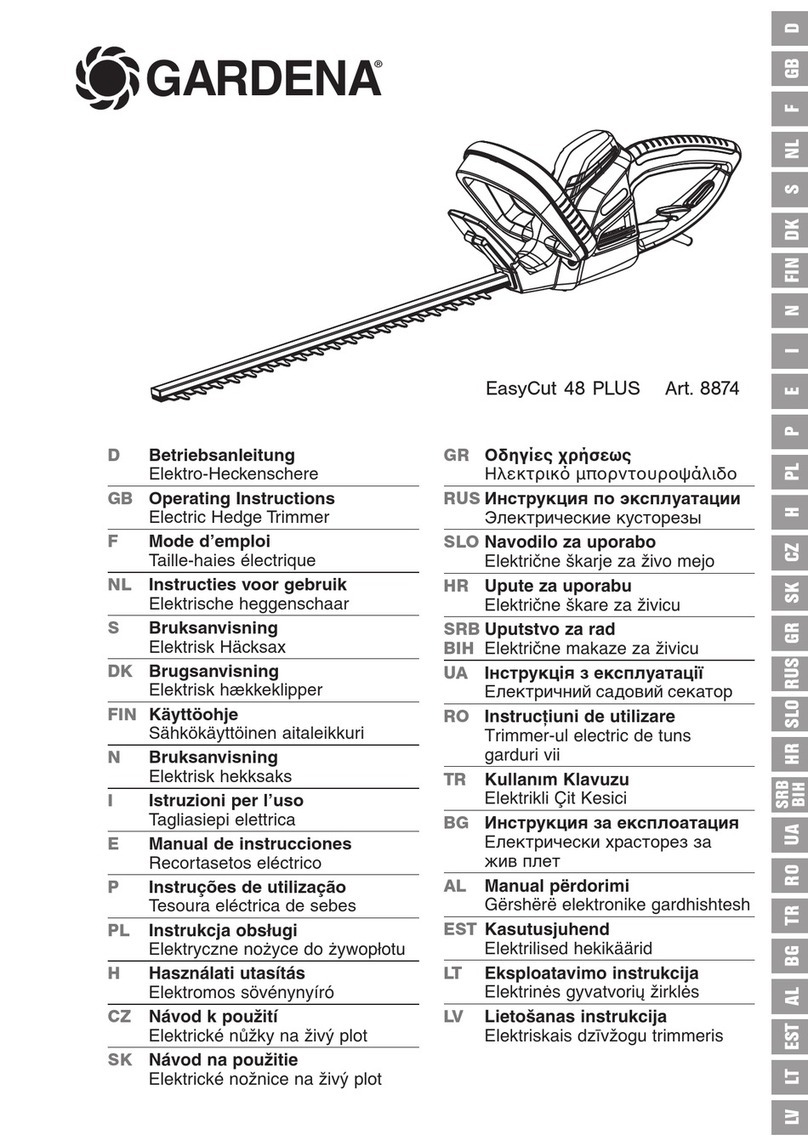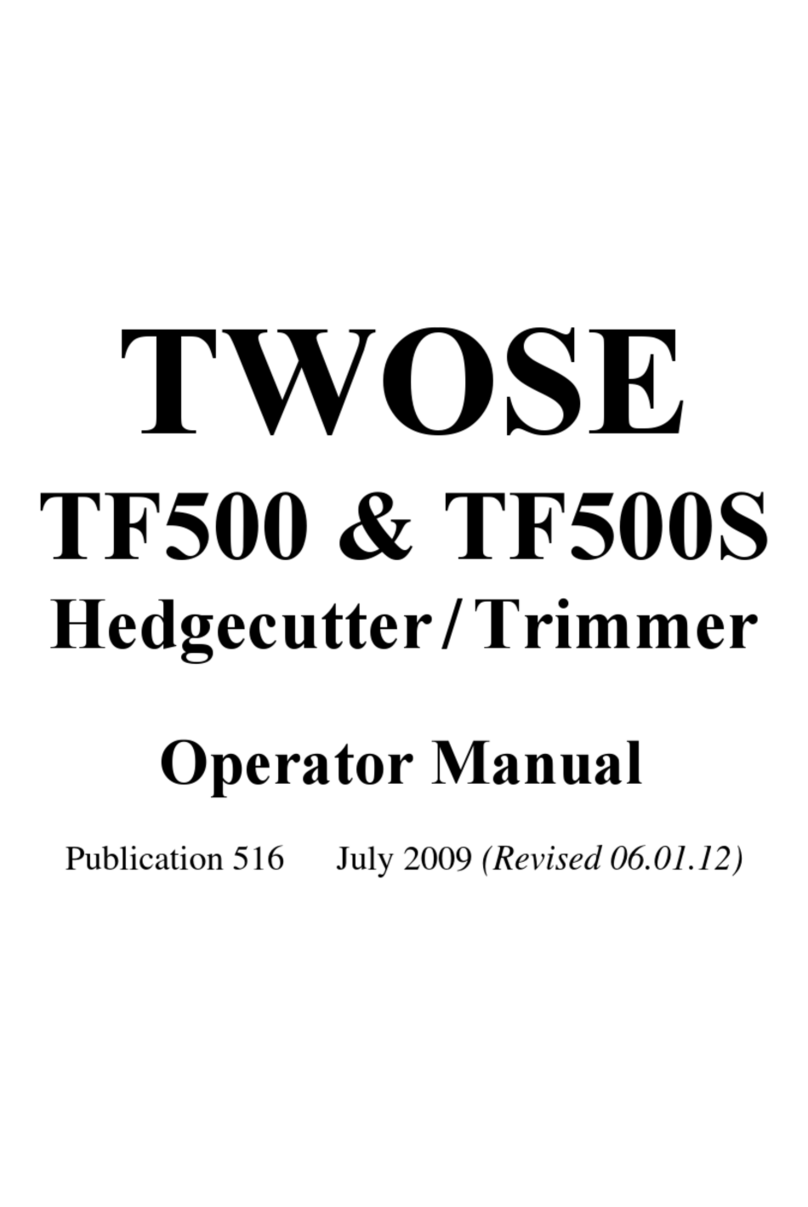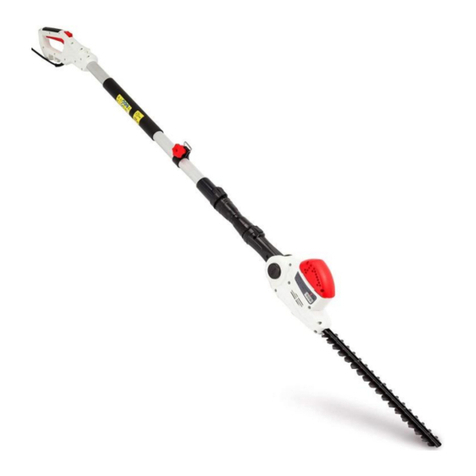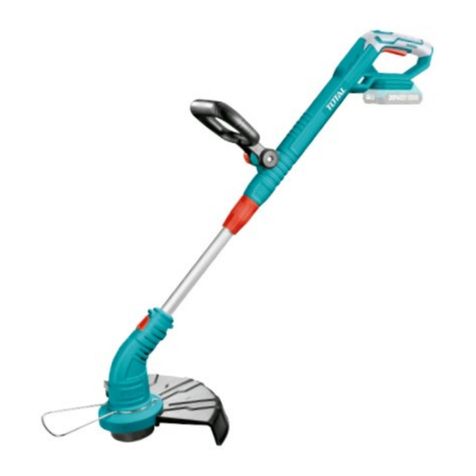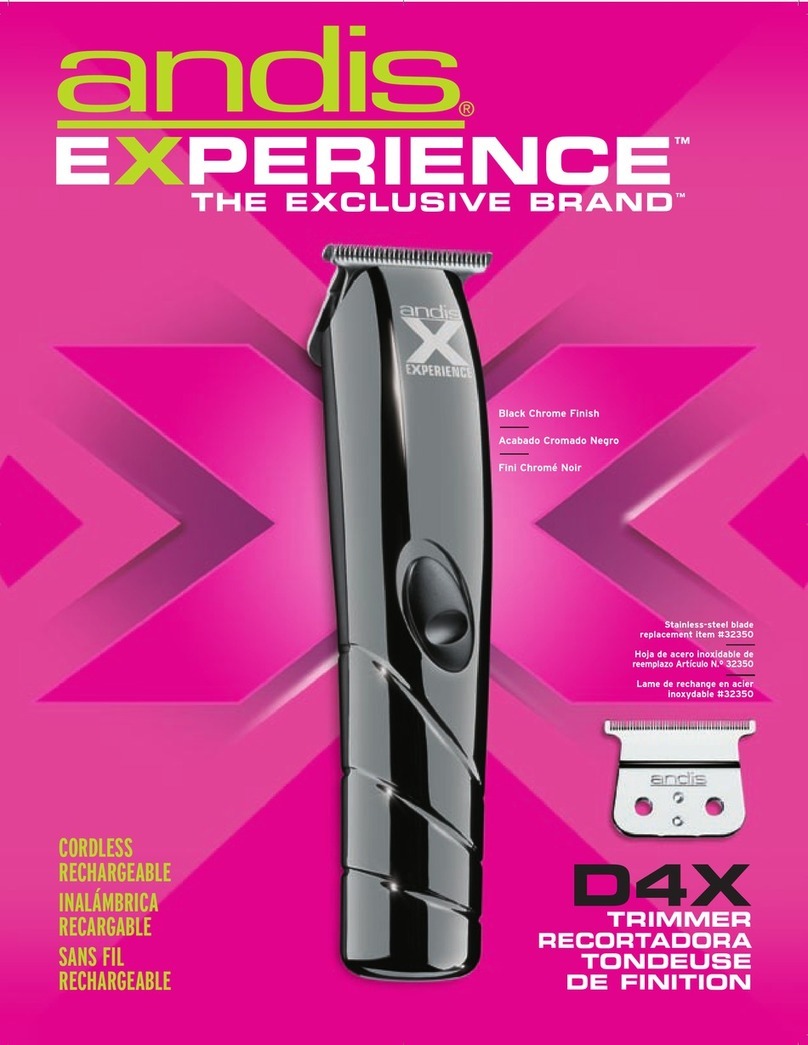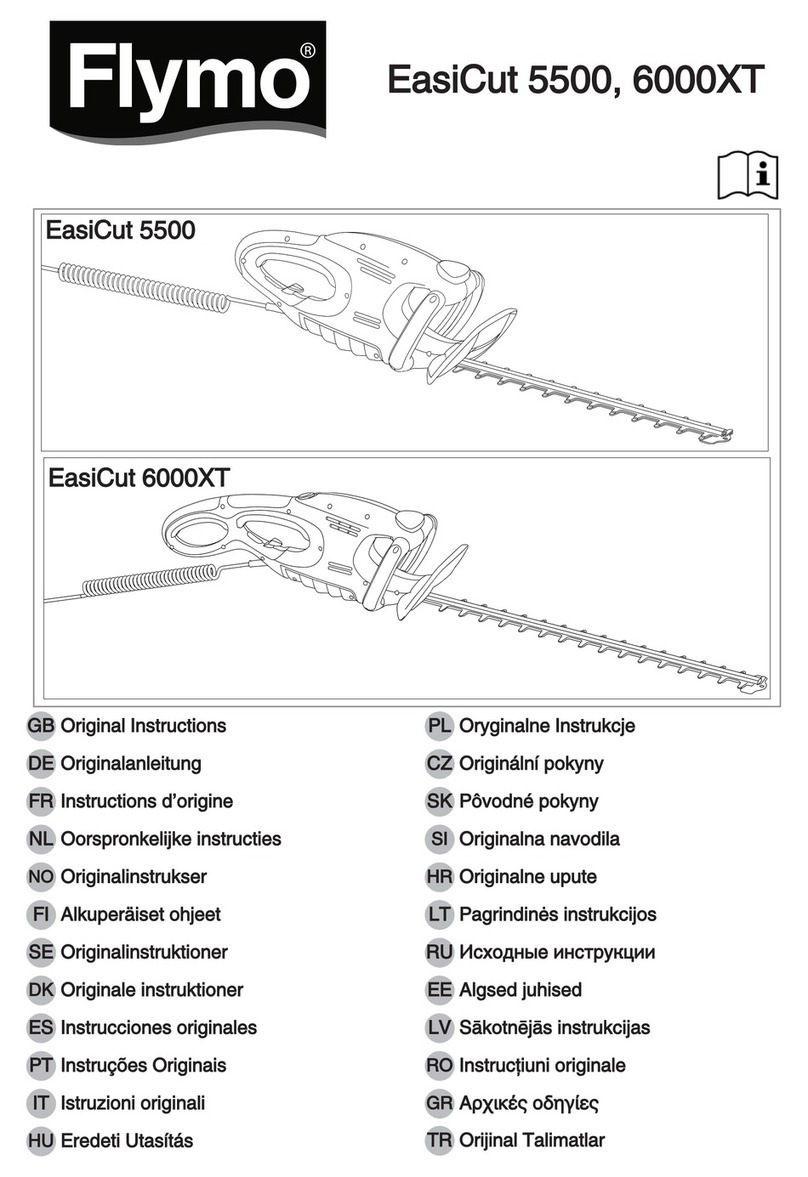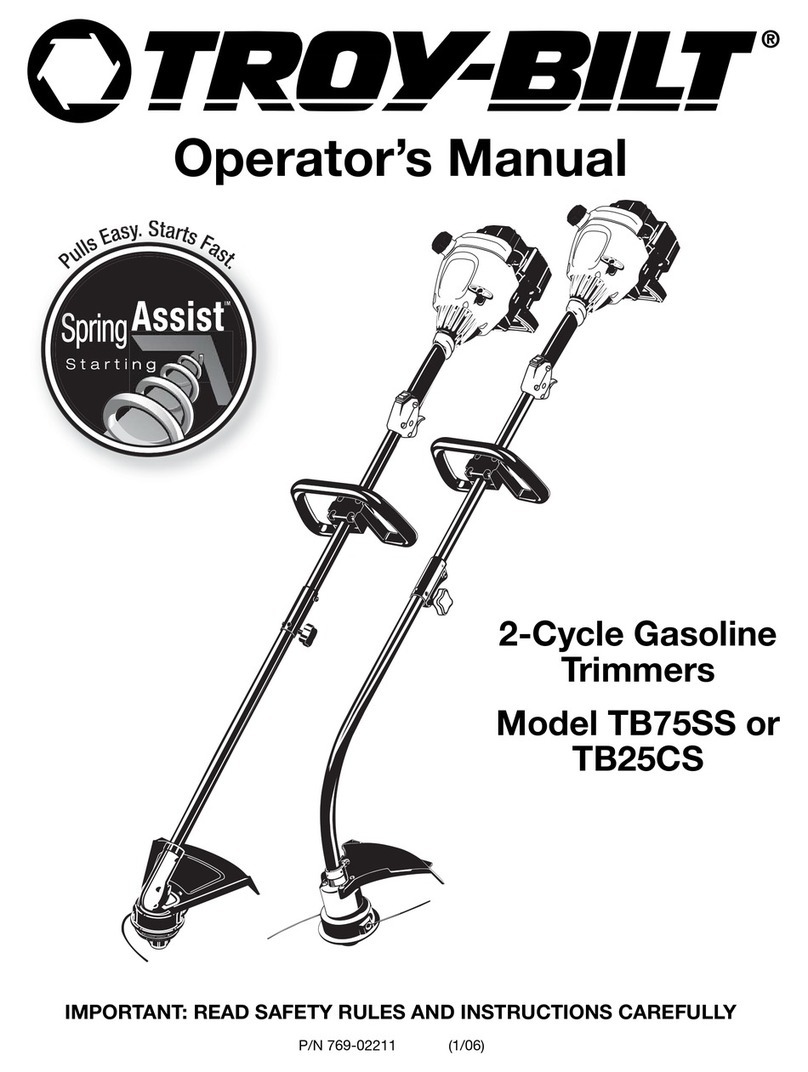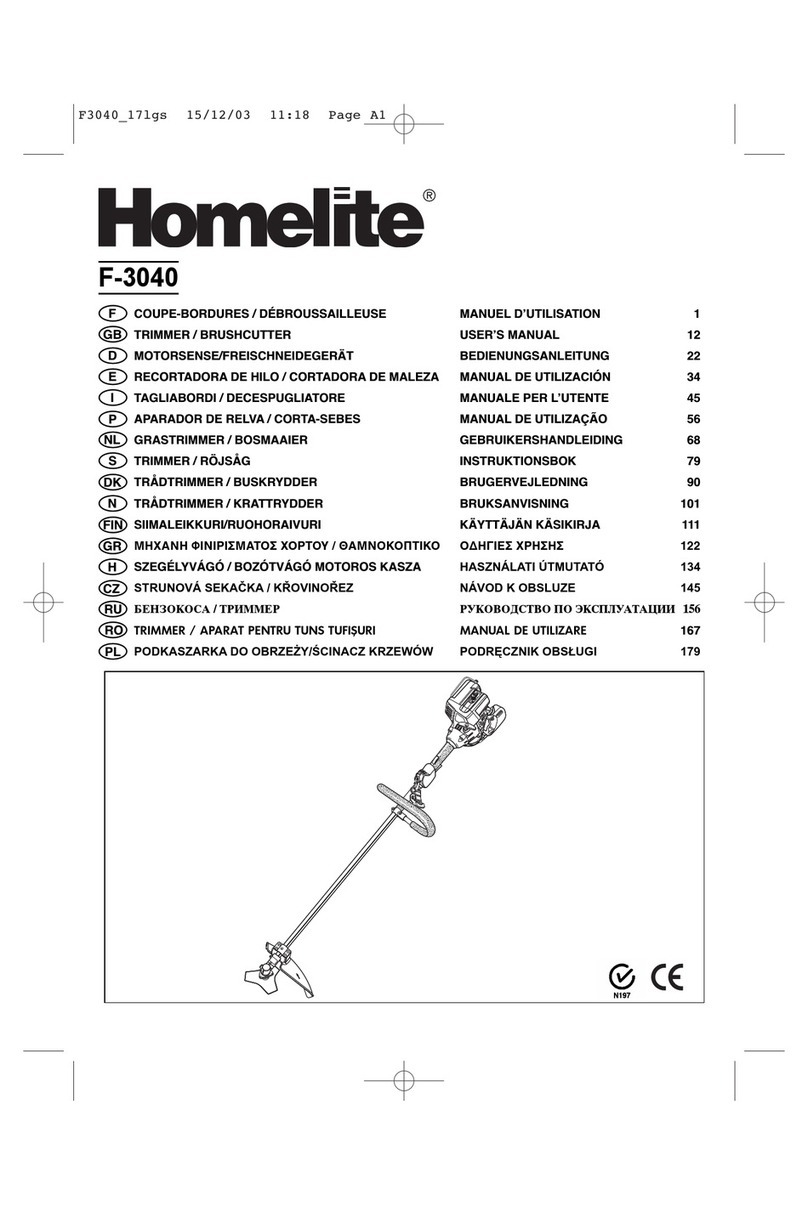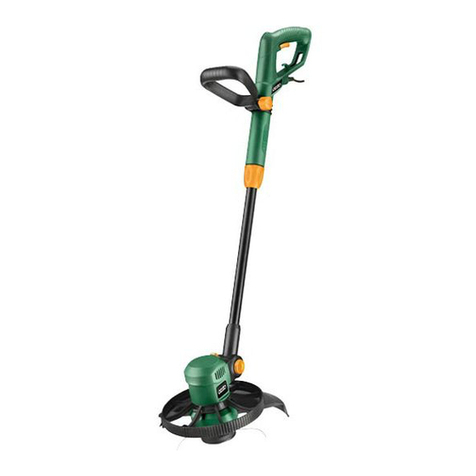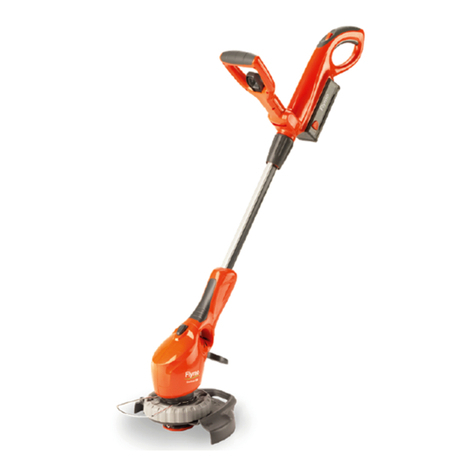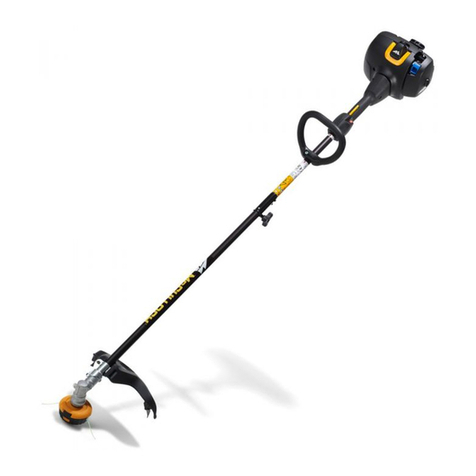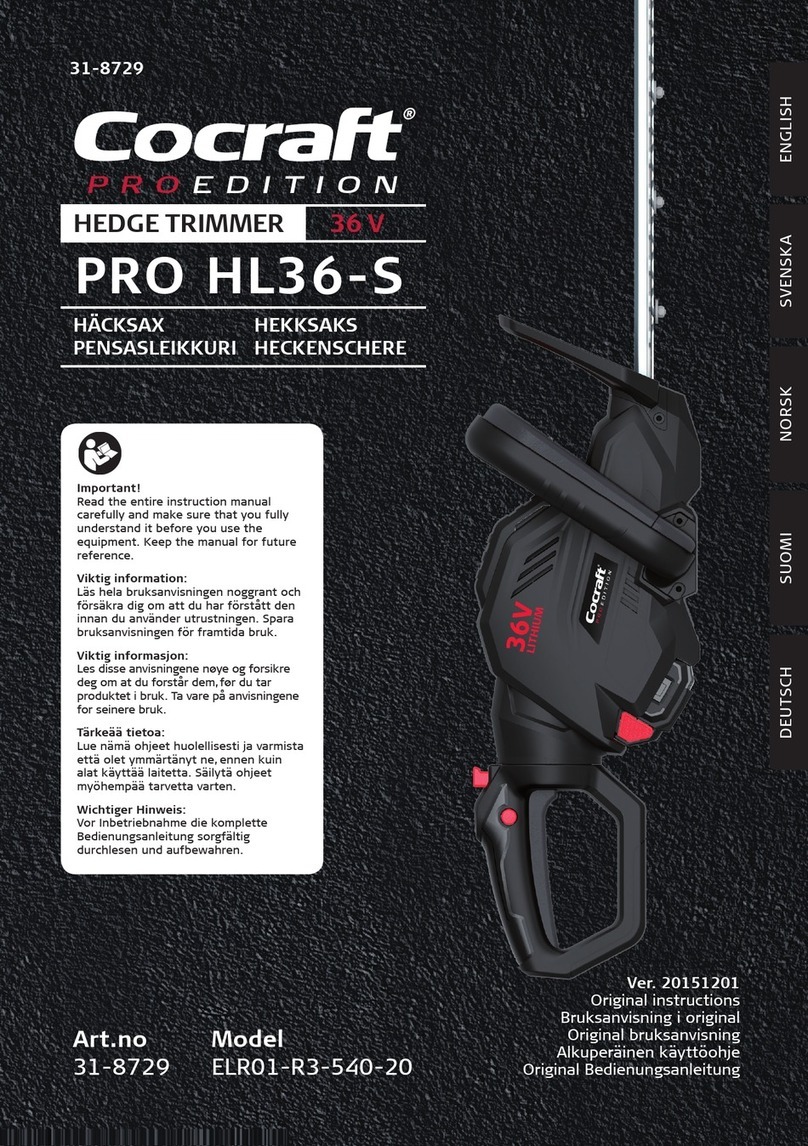
HL 94, HL 94 K
English
6
Make sure you always have a firm and
secure footing.
When working at heights:
–Always use a lift bucket
–Never use the machine while
standing on a ladder or in a tree
–never work on an unstable surface
–Never use the machine with just one
hand
Be particularly alert and cautious when
wearing hearing protection because
your ability to hear warnings (shouts,
alarms, etc.) is restricted.
Take breaks when you start getting tired
or feeling fatigue – risk of accidents!
Work calmly and carefully – in daylight
conditions and only when visibility is
good. Proceed with caution, do not put
others in danger.
To reduce the risk of serious or fatal
injury from breathing toxic fumes,
ensure proper ventilation when working
in trenches, hollows or other confined
locations.
Stop work immediately if you start
suffering from nausea, headaches,
impaired vision (e.g. your field of vision
gets smaller), impaired hearing,
dizziness, or impaired concentration –
these symptoms may possibly be the
result of too-high exhaust gas
concentration – Risk of accidents!
Operate your power tool so that it
produces a minimum of noise and
emissions – do not run the engine
unnecessarily, accelerate the engine
only when working.
To reduce the risk of fire, do not smoke
while operating or standing near your
power tool. Combustible fuel vapor may
escape from the fuel system.
Dusts, mist and fumes emissions during
the work may be hazardous to your
health. Wear respiratory protection in
case of heavy dust or smoke emission.
If your power tool is subjected to
unusually high loads for which it was not
designed (e.g. heavy impact or a fall),
always check that it is in good condition
before continuing work – see also
"Before Starting". Check in particular
that the fuel system has no leaks and the
safety equipment is fully operative.
Never use a power tool that is no longer
safe to operate. In case of doubt, contact
a dealer.
Do not operate your power tool in the
starting throttle position – engine speed
cannot be controlled in this position.
Inspect the hedge and work area to
avoid damaging the cutting blades:
–Remove stones, rocks, pieces of
metal and other solid objects
–When working close to the ground,
make sure that no sand, grit or
stones get between the cutting
blades
–Take particular care when cutting
hedges next to or against wire
fences
Do not touch electric power lines – never
cut through electric power lines – risk of
electrocution!
Opening the throttle when the cutting
blades are jammed increases the load
and reduces the working speed of the
engine. The constant slipping of the
clutch causes overheating and damage
to important components (e.g. coupling,
plastic housing parts) – thus e.g. due to
the cutting blade moving during idling –
risk of injury!
If the hedge is very dusty or dirty, spray
the cutting blades with STIHL resin
solvent from time to time during cutting.
This helps reduce blade friction as well
as the aggressive effects of sap and the
build-up of dirt particles.
Before you leave the machine: Shut the
engine off.
Your power tool produces
toxic exhaust fumes as
soon as the engine starts
running. These gases
may be odorless and
invisible and may contain
unburned hydrocarbons
and benzene. Never run
the engine indoors or in
poorly ventilated loca-
tions, even if your model
is equipped with a cata-
lytic converter.
The gear head becomes
hot during operation. To
reduce the risk of burn
injury, do not touch the
gear housing!
Do not touch the cutting
blades.while the engine
is running. If the cutting
blades become jammed
by an object, switch off
the engine immediately
before attempting to
remove the object – risk
of injury!

